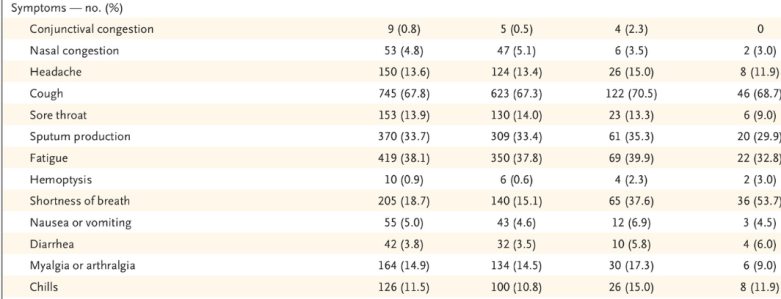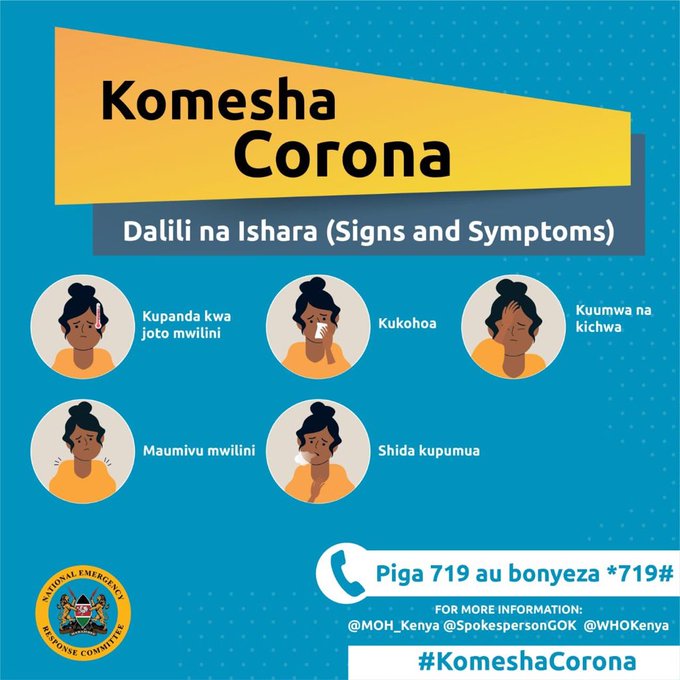
Getty What are the early symptoms of coronavirus? (COVID-19)
The Centers for Disease Control and Prevention has added three new COVID-19 symptoms to its list. What are they?
The three new symptoms are: Congestion or runny nose, nausea, and diarrhea.
“People with COVID-19 have had a wide range of symptoms reported – ranging from mild symptoms to severe illness. Symptoms may appear 2-14 days after exposure to the virus,” CDC explained. According to CDC, people with these symptoms may have COVID-19:
Fever or chills
Cough
Shortness of breath or difficulty breathing
Fatigue
Muscle or body aches
Headache
New loss of taste or smell
Sore throat
Congestion or runny nose
Nausea or vomiting
Diarrhea
“This list does not include all possible symptoms. CDC will continue to update this list as we learn more about COVID-19,” the agency reports. The symptom change comes as COVID-19 is spiking in some states, like Florida, as lockdown rules are eased.
Here’s what you need to know:
Diarrhea & Nausea
First of all, just because you have gastrointestinal symptoms doesn’t mean you have coronavirus. You might have the flu, a common cold, or something else. There might be something non-viral going on of concern. Or maybe it’s anxiety. Your doctor is better equipped to tell you that (don’t take medical advice over the Internet!) But credible research studies and governmental sites have outlined the common symptoms for coronavirus. Gastrointestinal issues, including diarrhea, are among them. Also be aware that the virus has an incubation stage (symptoms appear between 2-14 days) and the symptoms themselves can take time to worsen (even 8 days or more). However, again, most people recover from COVID-19.
A study from the Wuhan Medical Treatment Expert Group for COVID-19 appeared in The American Journal of Gastroenterology. It studied 204 people who received medical care for COVID-19. You can find the study here. The researchers found that digestive problems were far more common in coronavirus patients than other studies indicated, writing that “half of patients in our cohort reported a digestive symptom.” However, that statistic was inflated by including people reporting a loss of appetite.
This study found that 34 percent of people reported suffering from diarrhea.
They concluded: “Although most patients presented to the hospital with fever or respiratory symptoms, we found that 103 patients (50.5%) reported a digestive symptom, including lack of appetite (81 [78.6%] cases), diarrhea (35 [34%] cases), vomiting (4 [3.9%] cases), and abdominal pain (2 [1.9%] cases).”
The researchers noted:
If lack of appetite is excluded from the analysis (since it is less specific for the gastrointestinal tract), there were 38 total cases (18.6%) where patients presented with a gastrointestinal-specific symptom, including diarrhea, vomiting, or abdominal pain. Patients with digestive symptoms had a significantly longer time from onset to admission than patients without digestive symptoms (9.0 days vs. 7.3 days). In 6 cases there were digestive symptoms but no respiratory symptoms. As the severity of the disease increased, digestive symptoms became more pronounced. Patients with digestive symptoms had higher mean liver enzyme levels, lower monocyte count, longer prothrombin time, and received more antimicrobial treatment than those without digestive symptoms.
The study also found: “Curiously, our data indicate that patients with digestive symptoms in our case series rarely had underlying digestive diseases.”
The article Clinical Characteristics of Coronavirus Disease 2019 in China was published in the New England Journal of Medicine. That article noted, “During the first 2 months of the current outbreak, Covid-19 spread rapidly throughout China and caused varying degrees of illness. Patients often presented without fever, and many did not have abnormal radiologic findings.” Thus, although fever is often cited as a leading indicator of coronavirus, an absence of a fever does not mean that you don’t have it, either.
However, this study also found that the most common coronavirus symptoms were fever and cough. This study found that, while gastrointestinal symptoms could occur in coronavirus patients, they were “uncommon” (nausea or vomiting was experienced by just 5 percent of patients studied, and diarrhea was suffered by only 3.8 percent).
“The median incubation period was 4 days (interquartile range, 2 to 7). The median age of the patients was 47 years (interquartile range, 35 to 58); 0.9% of the patients were younger than 15 years of age. A total of 41.9% were female. Fever was present in 43.8% of the patients on admission but developed in 88.7% during hospitalization,” the researchers reported. “The second most common symptom was cough (67.8%); nausea or vomiting (5.0%) and diarrhea (3.8%) were uncommon. Among the overall population, 23.7% had at least one coexisting illness (e.g., hypertension and chronic obstructive pulmonary disease).”
Here’s the list of symptoms with percentages found in that research study:

Emerging 2019 Novel Coronavirus (2019-nCoV) Pneumonia is another research study that broke down the percentages of symptoms in Chinese patients with the virus.
That study of coronavirus patients found that 10 percent had diarrhea and 6 percent had nausea or vomiting. The most common symptom was fever, which was reported by 96 percent of patients, following by a cough (47 percent), a little phlegm (20 percent), myalgia or fatigue (31 percent), mild headache and dizziness (16 percent), loss of appetite (18 percent), and stuffy or runny nose (4 percent).
Here’s the symptom chart from that study:

According to Harvard Medical School, “some people infected with the virus have no symptoms. When the virus does cause symptoms, common ones include low-grade fever, body aches, coughing, nasal congestion, and sore throat. However, COVID-19 can occasionally cause more severe symptoms like high fever, severe cough, and shortness of breath, which often indicates pneumonia.”
Congestion or Runny Nose
Fox5 News pointed out that allergies present with similar symptoms: “sneezing, itchy eyes and a runny nose.” Whether you’ve commonly suffered such seasonal allergies in the past could be an indicator that’s all it is this time too, the station reported, noting that if you get relief from your allergy medication it might be just that.
Some studies into COVID-19 patients have found that the typical reliance on a trifecta of top symptoms (fever, dry cough, shortness of breath) is missing the fact that COVID-19 patients can present with a longer list of symptoms.
One study found that, while a runny nose (labeled nasal congestion) could occur in coronavirus patients, it wasn’t common; only 4.8 percent of patients studied had nasal congestion (13.9 percent had a sore throat and 13.6 percent had a headache).
“Emerging 2019 Novel Coronavirus (2019-nCoV) Pneumonia“ is another research study that broke down the percentages of symptoms in Chinese patients with the virus.
That study of coronavirus patients found that only 4 percent had a runny nose. The most common symptom was fever, which was reported by 96 percent of patients, followed by a cough (47 percent), a little phlegm (20 percent), myalgia or fatigue (31 percent), mild headache and dizziness (16 percent), and loss of appetite (18 percent).
Harvard Medical School does list nasal congestion on its symptom list. According to Harvard Medical School, “some people infected with the virus have no symptoms. When the virus does cause symptoms, common ones include low-grade fever, body aches, coughing, nasal congestion, and sore throat. However, COVID-19 can occasionally cause more severe symptoms like high fever, severe cough, and shortness of breath, which often indicates pneumonia.”
It’s not hard to find people on the Internet who claim that they know someone who has coronavirus (or they do) and a runny nose was among the other symptoms.
READ NEXT: Kristy Ann Wilker: Fort Wayne, Indiana, Nurse Fired Over George Floyd Rant

